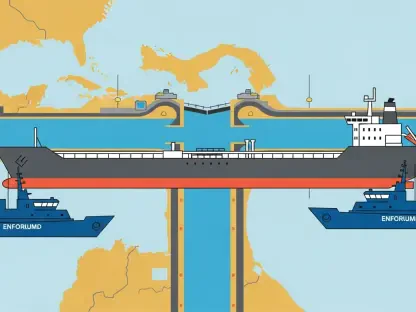As the COP30 summit unfolds in Belem, Brazil, the global community is grappling with an urgent reality: the escalating need for climate adaptation funding to shield vulnerable nations from intensifying storms, floods, and wildfires, which are becoming more frequent and severe. This year’s United Nations climate conference has elevated adaptation to a top priority, a notable departure from its secondary status at previous summits. With developing countries bearing the brunt of climate-driven disasters, the discussions in Brazil are not just academic but a desperate call to action for protecting millions of lives, livelihoods, and ecosystems already under siege.
The human and economic toll of recent catastrophes drives home the immediacy of this crisis. Events like Hurricane Melissa in Jamaica, which inflicted $7 billion in damages—equivalent to a third of the nation’s GDP—alongside Typhoon Kalmaegi in Vietnam and Super Typhoon Fung-wong in the Philippines, highlight the devastating impact of a warming planet. These disasters are not isolated; they are a grim preview of what’s to come without substantial resources for preparation and recovery. At COP30, the message is clear: international support and innovative financial strategies must rise to meet these unprecedented challenges.
Addressing the Financial Hurdles
Unpacking the Massive Funding Shortfall
The financial demands of climate adaptation are staggering, as revealed by a U.N. report presented at COP30, which estimates that developing countries will require up to $310 billion annually by 2035 to enact critical resilience measures. This projection stands in stark contrast to the $26 billion provided last year by development banks to low- and middle-income nations for such initiatives. This enormous disparity underscores a systemic failure to match resources with need, leaving countless communities exposed to the worsening impacts of climate change. Without a dramatic increase in funding, the ability to safeguard infrastructure, agriculture, and human lives against rising seas and extreme weather remains severely limited, perpetuating a cycle of vulnerability and loss that disproportionately affects the poorest regions.
Beyond the raw numbers, the implications of this funding gap are profound for global equity. Many nations lack the fiscal capacity to independently finance adaptation projects, relying heavily on external aid that often comes with strings attached or falls short of expectations. The shortfall not only hampers immediate disaster preparedness but also delays long-term strategies for sustainable development in areas like water management and food security. At COP30, the urgency to close this gap has resonated through plenary sessions, with calls for richer nations to step up contributions and for multilateral institutions to streamline access to funds, ensuring that resources reach those who need them most before the next catastrophe strikes.
Barriers in Private Sector Engagement
Private finance, a potential lifeline for adaptation, currently contributes a meager 3% to the total funding pool, a figure that pales in comparison to investments in sectors like renewable energy with quicker returns. As noted by the Zurich Climate Resilience Alliance, this share could grow to 15% with supportive policies, yet adaptation projects—such as building flood barriers or restoring communities post-disaster—rarely offer the financial incentives that attract private investors. This structural challenge highlights a critical need for public-private partnerships and innovative mechanisms to make resilience-building more appealing to capital markets, a topic of intense debate at the summit.
The reluctance of private entities to engage stems from the inherent risks and lower profitability of adaptation initiatives compared to mitigation projects like solar farms. Governments and international bodies are thus tasked with creating frameworks that de-risk investments, perhaps through guarantees or subsidies, to entice greater corporate involvement. Discussions at COP30 have emphasized the importance of blending public funds with private capital to scale up resources, recognizing that public budgets alone cannot shoulder the burden. Without such collaboration, the adaptation crisis risks deepening, leaving vulnerable populations to face climate impacts with insufficient support, a scenario that global leaders are determined to avoid through policy innovation.
Pathways to Resilience Through Global Efforts
Commitments and Novel Financial Tools
Amid the daunting financial landscape, COP30 has witnessed promising strides toward bolstering adaptation resources, with Germany and Spain pledging $100 million to the Climate Investment Funds (CIF) for resilience projects in developing nations. This commitment reflects a growing recognition of shared responsibility among wealthier countries to support those hardest hit by climate change. Furthermore, a U.N.-backed Systematic Observations Financing Facility is poised to launch a $200 million impact bond by the end of 2026, targeting improved weather monitoring in at-risk regions—a direct result of momentum built from the prior COP in Baku. These initiatives signal a shift toward creative financing that could unlock diverse capital sources.
Such financial innovations are vital for addressing the scale of the adaptation challenge, as traditional funding models struggle to keep pace with escalating needs. Impact bonds, for instance, tie returns to measurable outcomes, potentially drawing in investors who prioritize social and environmental impact alongside profit. At the summit, experts have highlighted how these tools can enhance early warning systems, a critical component of disaster preparedness that saves lives and reduces economic losses. The pledges and proposals emerging from COP30 offer a glimmer of hope, suggesting that collaborative efforts can pave the way for more resilient societies, provided they are scaled up and implemented with urgency and precision.
Tailored Approaches for Varied Challenges
The spectrum of adaptation needs is vast, as evidenced by initiatives discussed at COP30, ranging from distributing air conditioners to mitigate extreme heat to leveraging artificial intelligence for soil mapping to improve agricultural productivity. These efforts extend beyond mere disaster response, aiming for enduring resilience across sectors like water, sanitation, health, and food security. A special focus has been placed on local communities and marginalized groups, with a UNHCR report noting that 86 million displaced individuals face heightened risks from climate hazards, compounding their existing struggles. Ensuring that solutions are context-specific and inclusive remains a priority for global leaders.
Equally critical is the emphasis on directing resources to those directly impacted, as stressed by David Nicholson of Mercy Corps, who advocates for empowering frontline communities to lead adaptation efforts. This approach acknowledges that top-down strategies often fail to address local nuances, such as cultural practices or geographic constraints, which are essential for effective outcomes. At COP30, case studies of grassroots projects have illustrated how small-scale investments in community-driven solutions can yield outsized benefits, from flood-resistant housing to drought-tolerant crops. By prioritizing localized action alongside global commitments, there is potential to build a more equitable framework for resilience, ensuring that no population is left behind in the face of climate adversity.









